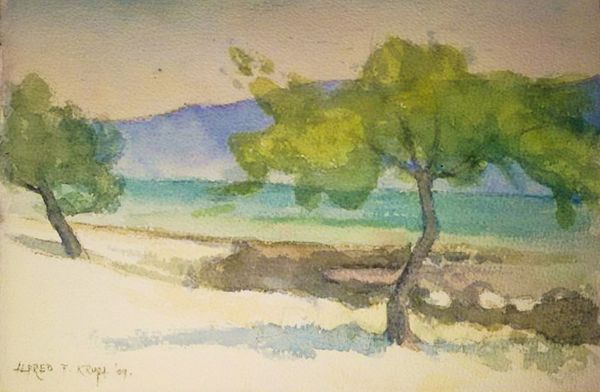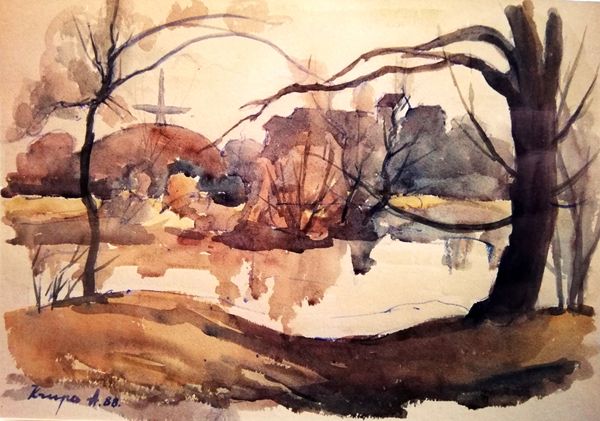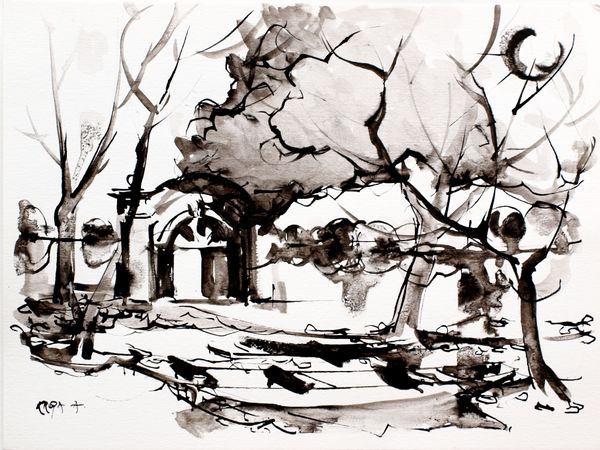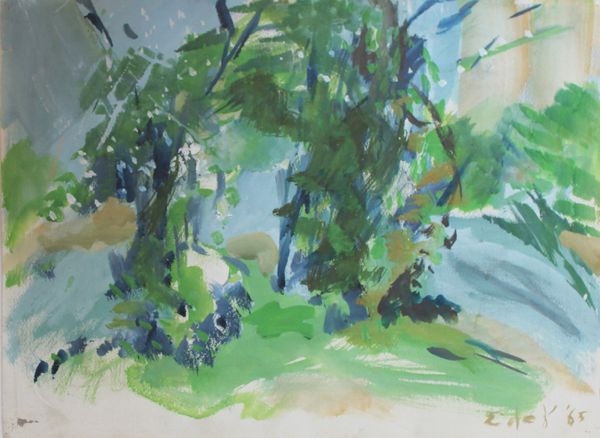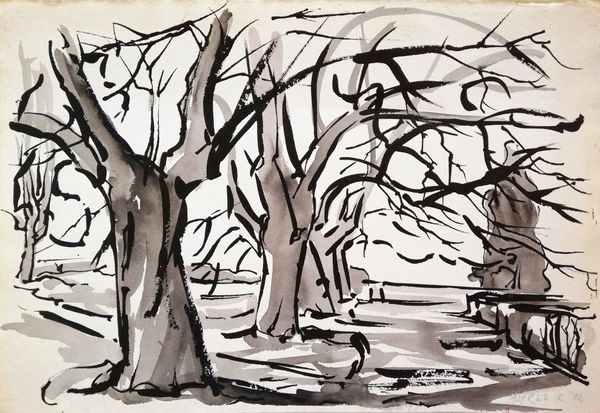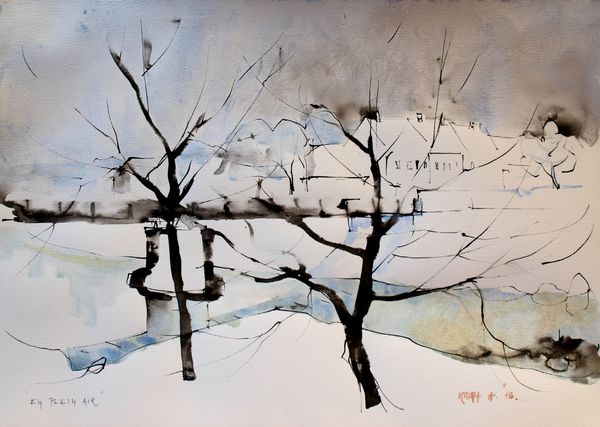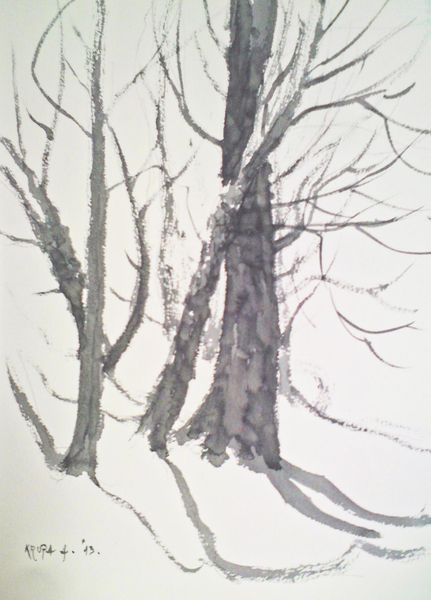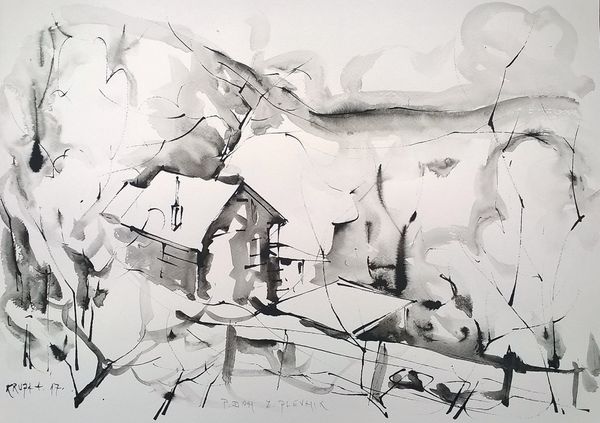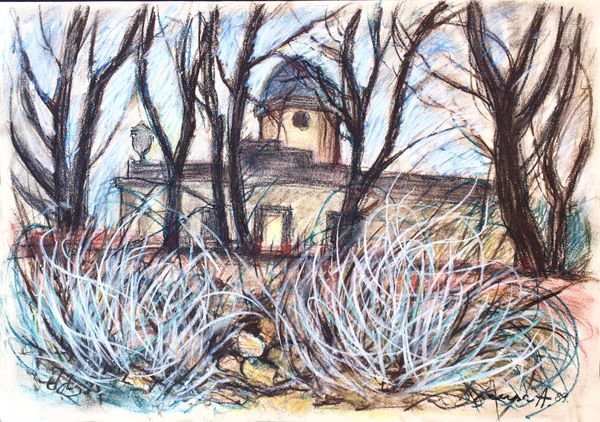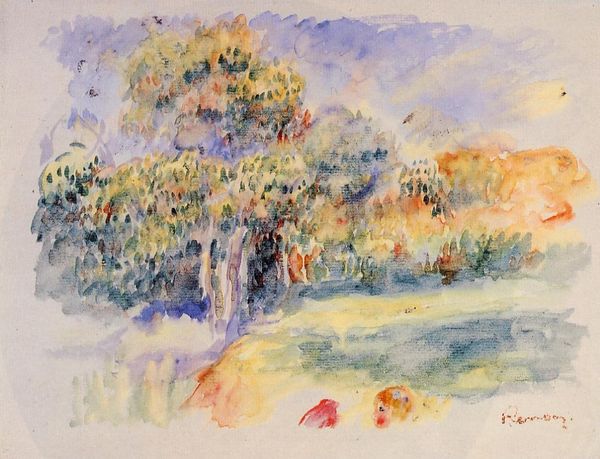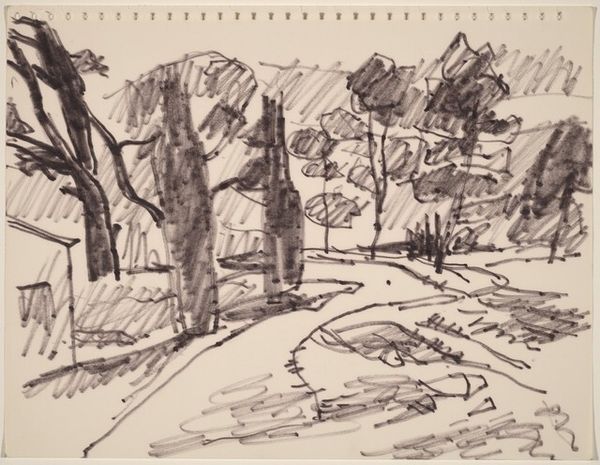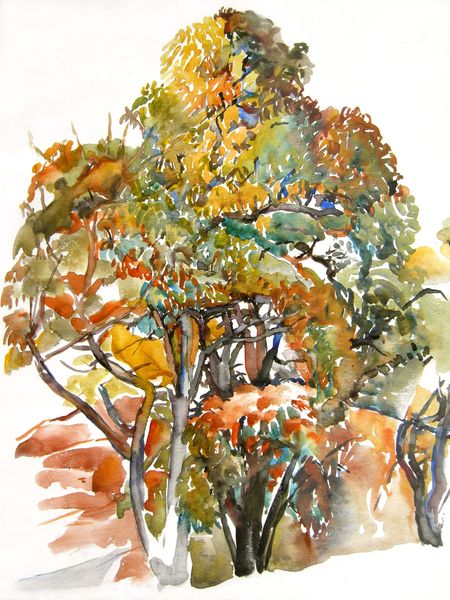
A hint of spring in the orchard near the castle of Dubovac (Old Dutch Bister and watercolor, reed pen and brush) 2022
0:00
0:00
watercolor
#
contemporary
#
organic
#
landscape
#
watercolor
#
line
#
watercolor
Dimensions: 30 x 40 cm
Copyright: Creative Commons NonCommercial
Curator: What strikes me immediately about Alfred Freddy Krupa's "A hint of spring in the orchard near the castle of Dubovac" is its delicate, almost wistful quality. The bare branches, rendered in watercolor and old dutch bister, create a sense of anticipation. Editor: Absolutely, the sparseness lends it a melancholic beauty. The limited color palette--primarily shades of brown with the faintest suggestion of blue sky--enhances this feeling. I’m wondering about the absence of actual “spring” though. It’s very subtle. Curator: The “hint” is key. Krupa isn’t presenting spring as a full bloom but rather its nascent presence, a potential just barely visible in the starkness of the landscape. Consider the social context: the painting was created in 2022. Is there some kind of veiled commentary? Editor: That's a perceptive point. Locating it historically matters. Perhaps the title plays on the year’s feeling of potential regrowth after years of upheaval, suggesting a guarded optimism through a lens of post-pandemic precarity, or even more troubling global political landscapes? Curator: I find myself drawn to the technique. The artist's use of a reed pen gives the lines a unique texture and slight irregularity, quite unusual when compared with traditional renderings of landscape using watercolor. The effect is wonderfully evocative. I feel the weight of cultural memory and a kind of Eastern European sensibility here. Editor: It also emphasizes a fragility – appropriate given the subject and potential thematic connections to ecological vulnerability. This aesthetic decision emphasizes the temporal aspect, inviting viewers to contemplate how societal resilience depends on respecting vulnerable moments. Curator: Looking closer, I also noticed what appears to be stylized birdhouses high in the branches of the trees, creating geometric interruptions to the organic line work. This can also speak to concepts of constructed dwellings vs natural ones, maybe? Editor: And speaking more widely to what ‘home’ and ‘nation’ mean in relation to history. The bareness amplifies this sentiment as ‘home’ seems distant, lost, and fragile. Curator: I think you have provided a fresh way to consider Krupa’s poignant meditation on hope and perhaps, healing. Editor: Likewise, the combination of historical placement with the understanding of fragility leaves me considering potential futures and possibilities in the contemporary era.
Comments
No comments
Be the first to comment and join the conversation on the ultimate creative platform.
